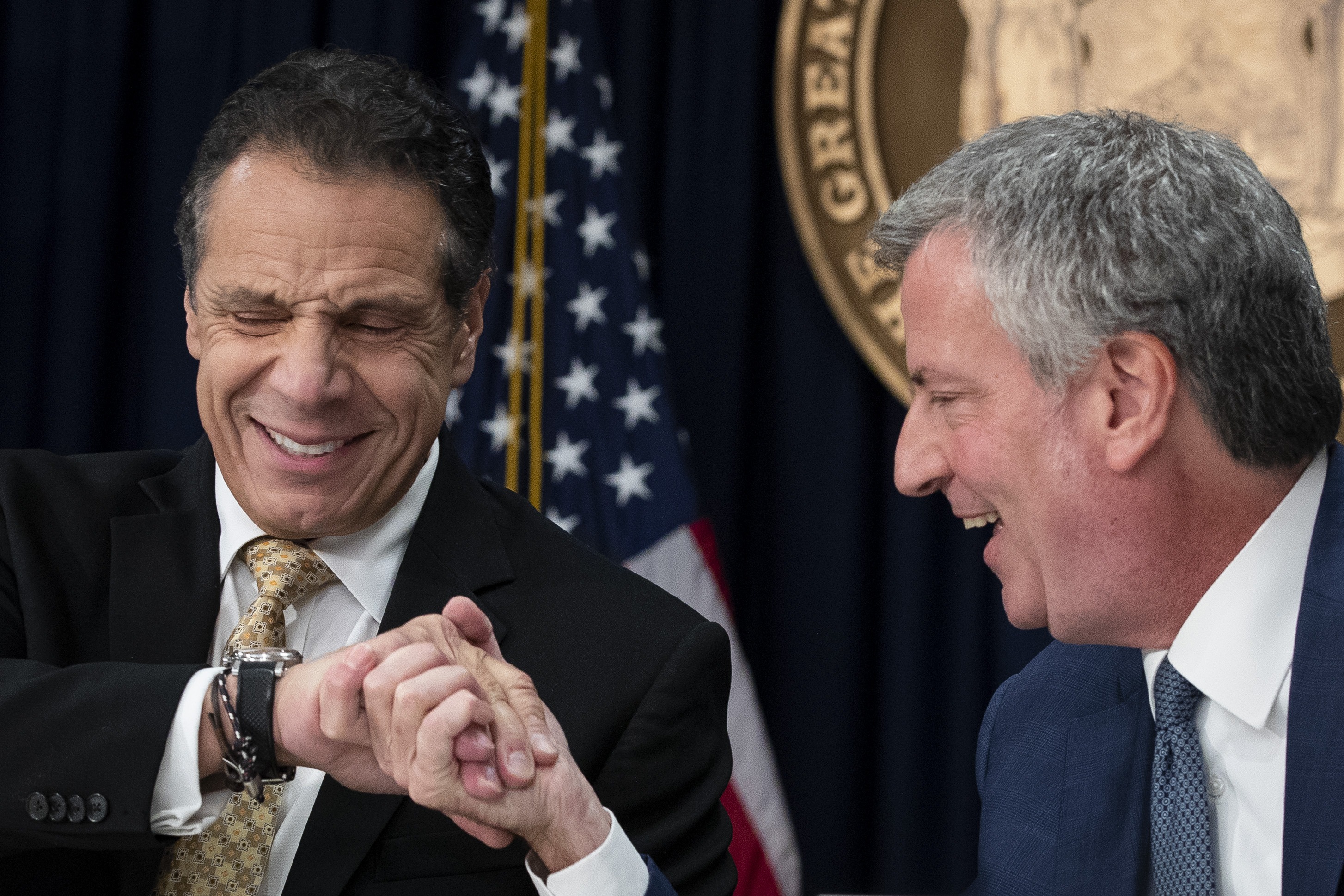Political Report
New York City Plan for Overdose Prevention Centers Runs into Resistance by Some Officials
In the face of an overdose epidemic, Bronx DA Darcel Clark rejects a harm reduction strategy and Governor Cuomo chooses inaction.
In the face of an overdose epidemic, Bronx DA Darcel Clark rejects a harm reduction strategy and Governor Cuomo chooses inaction
This article was published as part of
the Daily Appeal newsletter of Jan. 22, 2019.
Last May, New York City Mayor Bill de Blasio announced a plan to open four pilot overdose prevention centers in the city. The centers, also known as safer consumption spaces, would be opened, initially for one year, in the Bronx, Brooklyn, and Manhattan. The plan was drafted in response to pressure from harm reduction advocates, the City Council, and the grim death toll from overdoses—1,487 in New York in 2017 alone, averaging one every six hours. In 2017, for the seventh year in a row, overdose deaths climbed in New York.

Today in Albany, drug policy activists, service providers, and parents who have lost children to overdoses converged on Governor Andrew Cuomo’s office in an act of civil disobedience. Cuomo signaled support for pilot programs while running for re-election in the fall but has taken no action since then. Jasmine Budnella of VOCAL-NY told the Daily Appeal that since last year, both New York City and Ithaca have been waiting for the state Department of Health to approve the pilots. Across the state there were over 3,000 deaths in 2017. Overdose deaths have increased 200 percent in less than a decade, while Cuomo has been governor.
Philadelphia, Seattle, and San Francisco have all announced plans to open safer consumption spaces. Plans in San Francisco were suspended after a veto by former Governor Jerry Brown, motivated in part by concerns about federal prosecution. The Department of Justice, while Jeff Sessions was still attorney general, had indicated that it viewed overdose prevention centers as illegal under federal law. But Cuomo has not said that his failure to act is tied to the position of the Justice Department.
The New York City health commissioner has said that according to estimates, the four pilot centers could save 130 lives a year. There are approximately 120 safer consumption spaces operating around the world, though there are none operating legally in the United States. (There have been reports for many years of sites operating underground.)
The city’s plan, which also requires the support of district attorneys and city council members in each borough, may have run into another obstacle: Bronx District Attorney Darcel Clark. When the city’s pilot plan was announced, Clark said she was “open-minded on the matter” and needed more information. (Manhattan District Attorney Cyrus Vance and Brooklyn DA Eric Gonzalez announced their support immediately.)
Of all the boroughs, the Bronx has been hit hardest by the overdose epidemic. In 2017, 363 residents died of overdoses, the most of any borough and the highest rate of overdose deaths. Two neighborhoods in the South Bronx had rates more than double the city average—44 and 46.2 deaths per 100,000 residents compared to 21.2 per 100,000 citywide.
On Sunday, Clark made comments that suggest that she is opposed to the centers. Appearing on a radio show, Clark said she thought it was “a little dangerous to set up places where people can shoot up safely [when] you don’t know what it is that they’re taking,” and that “government should not be involved in taking on that type of liability.”
Budnella said this position is consistent with others Clark has taken. “DA Clark has a history as a prosecutor who prioritized criminalization over the lives of Bronx residents,” she said. “Her rejection of a public health tool that has saved countless lives and seen no overdose deaths means that those increases will continue in the Bronx.”
Kassandra Frederique of Drug Policy Alliance told the Daily Appeal, “I think a better question to ask is, why we keep asking DA Clark and other law enforcement officials what are appropriate interventions in a health crisis? The Bronx is in crisis … and overdose prevention centers are a tool that we must use immediately.”
Citywide, the 2017 statistics show an accelerating death rate for Black, poor, and older New Yorkers. The rate of overdose deaths among Black New Yorkers surpassed that of white and Latinx New Yorkers, for the first time in 11 years. Black New Yorkers also had the largest increase in overdose deaths from 2016 to 2017. Overdose rates among white New Yorkers, in contrast, declined. The rate of overdose deaths in “very high poverty” neighborhoods is more than double than in “medium and low poverty” neighborhoods. And while overdose deaths are most common among those aged 35 to 54, the largest increase was among those 55 to 84.
Keith Brown, director of Health and Harm Reduction at the Katal Center, told the Daily Appeal in an email, “We already know from research in other countries, as well as here in the U.S., that these spaces [overdose prevention centers] do exactly what they’re designed to.” He drew a parallel between the “refusal to accept scientific evidence” and the resistance of prosecutors and other public officials during “the fight to get syringe exchange and naloxone in NY and the rest of the US.” Claims “that crime would increase, and that we would be encouraging more people to use more drugs” were common then too. “Now that we have decades worth of proof that none of that was true, and…these programs are accepted as a crucial part of the public health infrastructure.”
Brown also pointed out that, “the exact reason DA Clark cites…that she ‘think[s] it’s a little dangerous to set up places where people can shoot up safely [when] you don’t know what it is that they’re taking,’ is actually one of the primary reasons we need these spaces.” He said overdose prevention centers can offer supplies, referrals, prescriptions, medication, screenings, “and most importantly, a taste of humanity and care for people who are marginalized and traumatized.”
